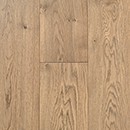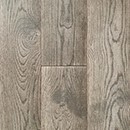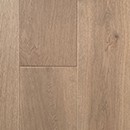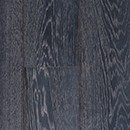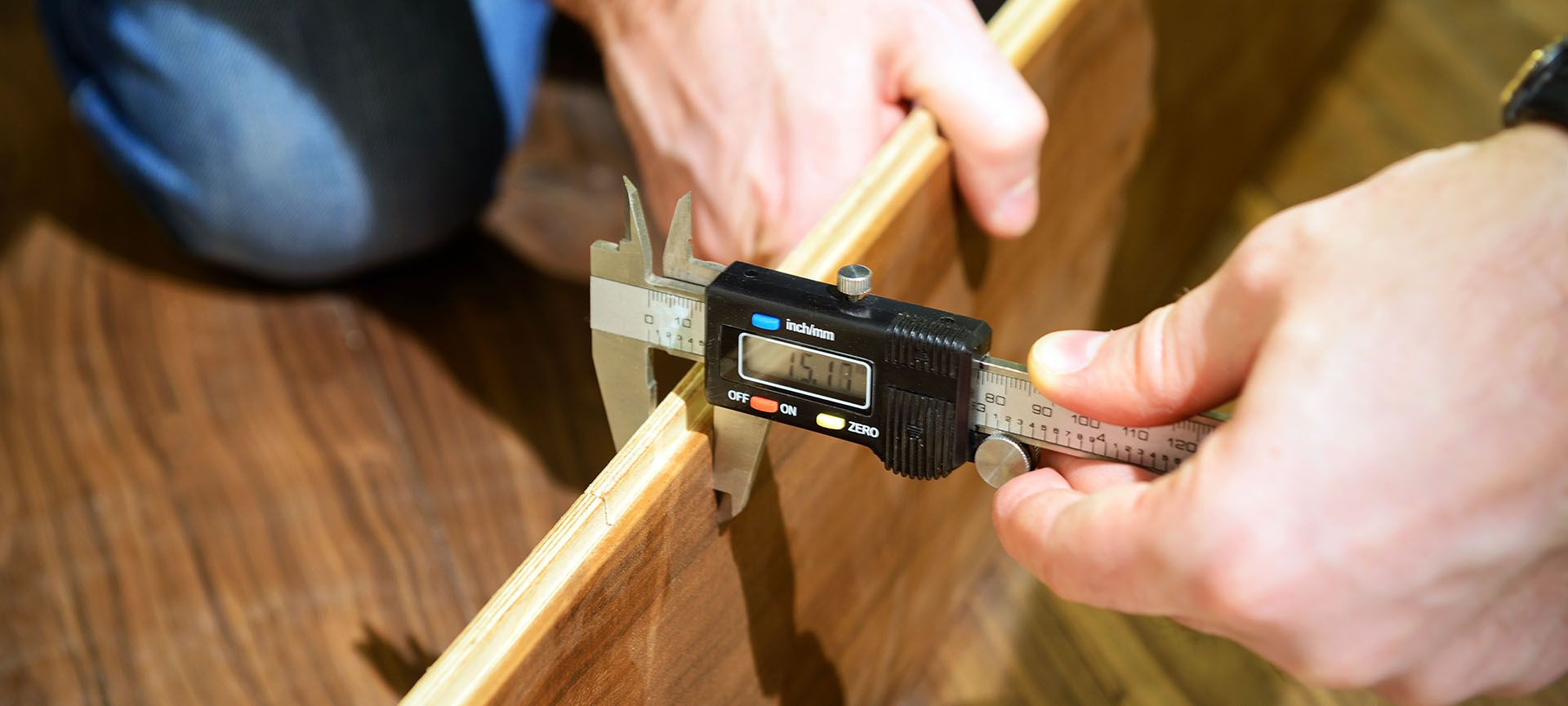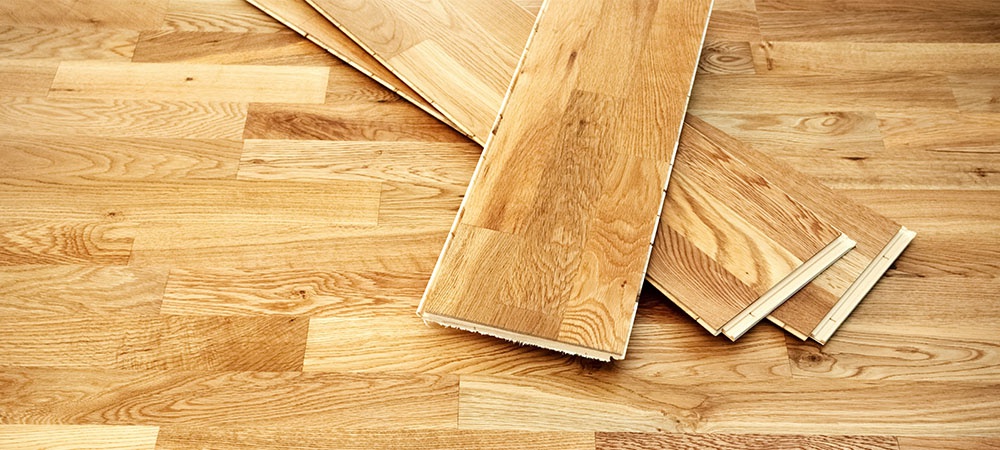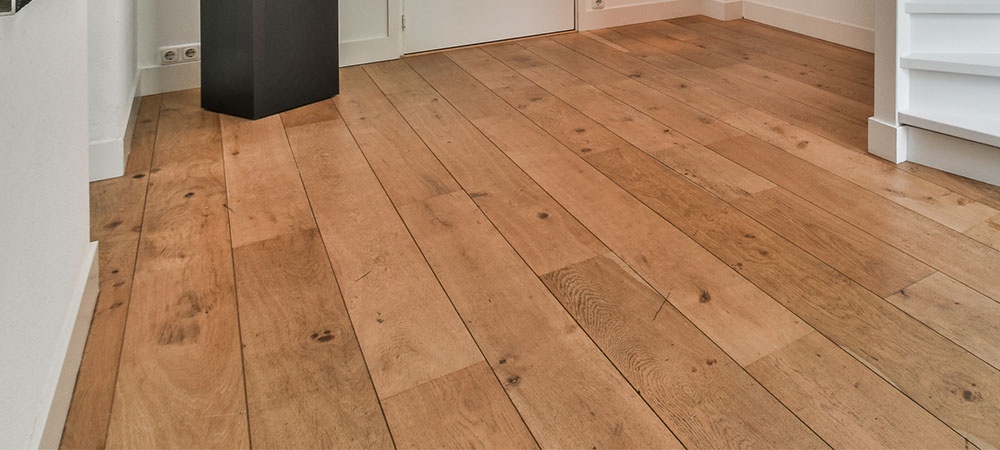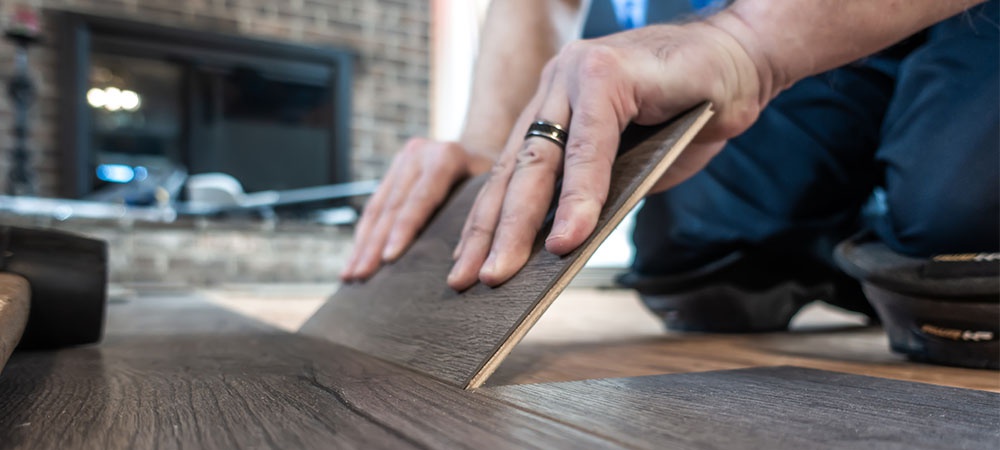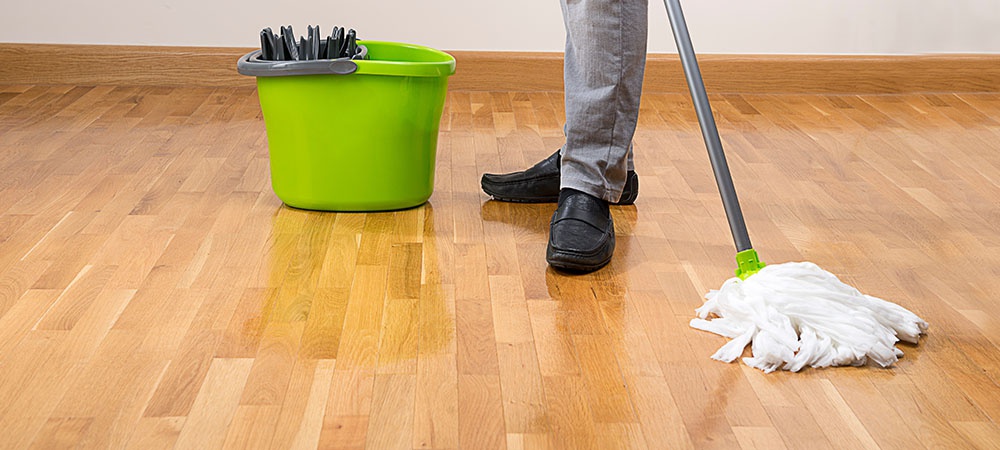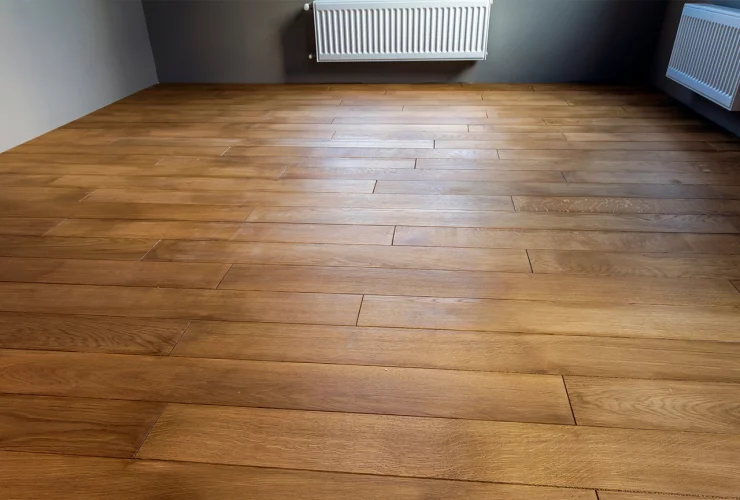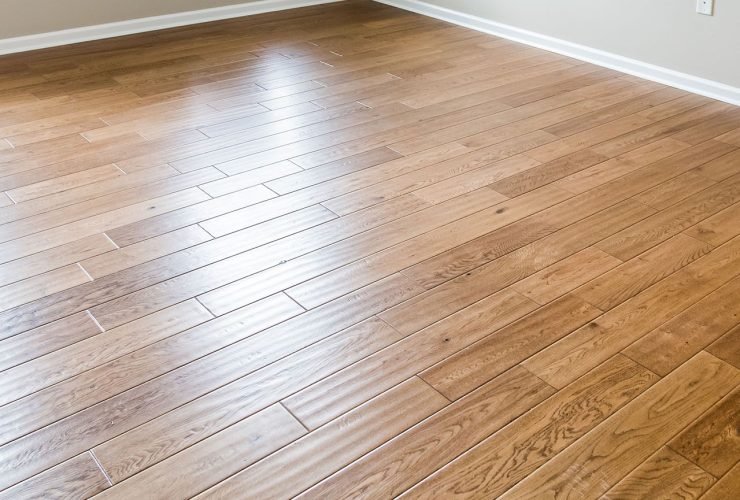What is the Best Thickness for Engineered Wood Flooring?
Engineered hardwood flooring is a major investment and requires intentionality. Different widths and lengths of planks are available, and one can choose from various stains, finishes, and species. But one variation people overlook is the best thickness for engineered wood flooring.
The seller may mention engineered wood flooring thickness. But these sellers will rarely offer you custom forms of thickness.
Should they provide alternatives regarding thickness, they seldom give explanations regarding the variances. They feel just the veneer will be visible to you.
Choosing the perfect engineered wood flooring isn’t just buying some fanciful planks. It entails more utility and quality assurance. And one of such things you need to look out for is flooring thickness.
What is the significance of thickness? Well, that’s debatable. But we’ll discuss that and more in this article.
What Thickness Should I Use for My Engineered Floor?
There are two basic categories of wood flooring, as you may be well aware. And they’re solid and engineered wood flooring. Simply put, solid wood flooring is flooring created entirely out of solid planks of wood, of whichever species you like.
Meanwhile, engineered wood flooring is different. It’s a carefully crafted wood flooring solution that appears just like the real thing. It’s known to be highly robust and adaptable in its installation across the home.
The stability of engineered wood flooring is not affected by its thickness. And just like solid wood flooring, it comes in various thicknesses, ranging from 10mm to about 21mm.
How do you determine the best thickness for engineered wood flooring? There are three main factors to consider when deciding on a suitable thickness:
- If you’re installing underfloor heating.
- The expected foot traffic in the space of the new flooring installation.
- Your sub floor’s build and condition.
Underfloor Heating
It’s undeniable that a thinner plank will facilitate the rapid transfer of heat. Therefore, if you currently have or intend to install under-floor heating, you should consider reduced thickness.
In any case, adhere to the manufacturer’s instructions for the best results. To install engineered wood flooring over under-floor heating, you should first consult with your flooring supplier and heating installer.
Foot Traffic Expected
Some parts of the house see far more action than others. For example, compared to dining rooms and bedrooms, passageways, kitchens, and living rooms usually take a beating over time.
Selecting a thicker board is advisable if you intend to install engineered wood flooring in a high-traffic area.
To extend the life of your floor and keep it looking fantastic for as long as possible, you should invest in thicker boards. This investment is because the thickness of an engineered floor’s lamellae or solid wood top layer determines how often it may be sanded.
For example, let’s say we have engineered wood flooring with a thickness of 21/6. Such floors may often be sanded up to seven times throughout their lifetime. This possibility makes it durable and cost-effective.
Meanwhile, a 15/4 plank, on the other hand, has a total thickness of 15 mm and a lamella or surface layer of 4 mm thick. As a result, a 15/4-inch-thick engineered wood floor can typically be sanded five times throughout its lifetime.
Looking at both thicknesses mentioned here, you’ll notice that, if any, the best thickness for engineered wood flooring for underfloor heating is 15/4.
You Should Check The Subfloor
It’s essential to know the level and composition of your subfloor before deciding on the best thickness of engineered wood flooring for your project. For example, a thicker board is preferable to a thinner one if your subfloor is uneven.
You should also choose at least an 18mm board if you intend to set your boards directly on joists. Then, the joists will offer the necessary stability.
Factors That Determine The Best Thickness For Your Engineered Wood Flooring
The following factors should be considered before choosing engineered wood flooring:
Wear Layer
Quality engineered wood flooring comprises many layers layered in a cross pattern. The best thick engineered wood flooring will have a framework like this to ensure its strength and endurance.
The wear layer, also known as the top layer of a board, is always made of hardwood. Some more affordable ranges have this layer constructed from many wood strips.
However, if you want a board that seems more like it came from the 1950s, we recommend using a ‘single strip’ wear layer made from a single piece of wood. When juxtaposing boards, you’ll see that the thickness of the wear layer varies.
The longer a board lasts and how often you can sand it back by hand depends on how thick its wear layer is.
Under-core
Although the under-core (also known as the oak’s “bottom layer”) is not something you’ll see, it’s nevertheless a crucial consideration when shopping for engineered hardwood flooring. This section of the board is responsible for the stability of the engineered wood.
The quality of the under-core varies from board to board. But the hallmark of a high-end product is the presence of a multi-laminate hardwood ply. Plywood’s cross-layered composition gives it strength and stability, making it a popular material in the construction industry.
Inexpensive engineered wood flooring options sometimes include a “block board” under-core, which isn’t remarkably stable (only 1 or 2 layers). This engineered board is less expensive than multi-laminate ply, but it’s also not nearly as sturdy or dependable.
You may want to build or already have an underfloor heating system. Or you may be installing the boards in an area subject to extreme temperature or humidity swings. You should pay special attention to the under-core you select in these cases.
Thanks to their sturdy cross-layered construction, Plywood boards won’t expand or contract as much as solid boards.
Dimensions
You may need different widths and lengths of engineered wood flooring boards to achieve various looks. Choosing a board with the size that will suit your property is a matter of personal choice, not of right or wrong.
However, there are a few things to keep in mind. First, flooring boards that are shorter and narrower are always less expensive yet still qualitative.
Some people think that a narrower, shorter board has a more classic and less modern look, making it more suited to older homes. However, once again, this is mostly a matter of individual preference.
Conversely, the cost of broader and longer boards will keep increasing, but they’ll be easier and faster to install. This situation is a significant consideration when estimating costs and selecting the most appropriate engineered wood flooring.
Similarly, long and wide floorboards will better showcase the wood’s inherent ornamental grain before a grain interruption by a joint. Many people think this makes them slightly more appealing.
Finish
You can have engineered oak flooring pre-treated or untreated. The former involves finishing at the factory with specific lacquers. The latter allows you to undertake board treatments onsite with a finish of your choice.
What Makes For The Best Engineered Wood Flooring?
In addition to thickness, some things make the best engineered wood flooring. These two things include aesthetic appeal and environmental suitability. So you need to consider these things strongly.
Apparent Beauty
You want your new broad plank floor to appear nice and solid when installed. But you don’t want it looking like it’s engineered. You can achieve the desired result by using a veneer layer cut in a very particular manner.
Let’s see some technical terms.
You can create the veneer layer of an engineered wood floor in one of two ways. One is with a saw blade to generate a dry sawn face. The second uses a knife blade to create a sliced, rotary, peeled look.
The former is like slicing a loaf, while the other is like peeling yam. Both result in qualitative and visually distinct traits, but for different reasons. The common misconception that engineered wood floors aren’t as aesthetically pleasing as solid wood floors is easily dispelled once you know the difference between the two.
The appearance of a dry sawn face floor is identical to that of a solid floor. Because of this, you may have longer and broader planks with the same stunning heartwood, character, and grain.
The thicker veneer layer resulting from this procedure may serve as the floor’s wear layer. A solid wood floor’s wear layer is around 3/16 inches, so you’ve made great strides by upgrading to the appropriate 3/16″ wear layer. The floor may now be sanded several times without compromising its durability (if needed).
Contrarily, engineered flooring that undergoes the slicing and rotational peeling process will only result in veneer layers that are even thinner (about 2 mm). Therefore, flooring with these smaller layers will trigger repair or replacement before it would with thicker layers.
Boiling the wood before peeling it can also lead to moisture problems. Last but not least, the finished floorboards from this process seem more like plywood than natural wood.
Internal and External Environmental Concerns
You shouldn’t have to worry about the broad plank floor’s effect on the indoor air quality when selecting a household or business location.
However, due to the global nature of the business, most flooring marketed in your environment today is produced in countries with less stringent industrial and environmental requirements than Canada’s. When this happens, volatile organic compounds and formaldehyde may negatively affect indoor air quality.
You should ensure that the engineered floor covering you purchase complies with CARB2, one of the world’s strictest indoor air quality regulations. Because VOCs in the air can harm people’s health, you should check that your prefinished wood floor complies with or surpasses all applicable standards.
If you care deeply about the planet, you should know that the flooring you buy from a local seller may not even be created in Canada, leaving a more significant ecological imprint on our precious Mother Earth. If something isn’t created in Canada, can you honestly say you support local businesses?
If you want to support Canadian workers and businesses, buying flooring from a firm that makes it here in Canada is best.
Related Article: Bona – The Best Coating System for Your Wood Flooring
Some Advantages of Thick Engineered Wood Flooring
The different thickness levels make engineered wood flooring the best for the following reasons:
Longer Boards Benefit Greatly From This
A huge tree is the best option for making a broad, solid wood board, as this is a necessary step in production.
However, the story doesn’t hold with engineered wood flooring. Plywood (from which engineered wood is made) flooring can have much wider planks than solid wood flooring. And there is no considerable cost increase associated with this option.
You may install two or three strips of engineered wood flooring in a bathroom without worrying about water damage. As a result, you will encounter fewer seam sightings. And that spans the whole room and goes in in a fraction of the typical time.
It’s Available in a Chevron Pattern Or A Parquet Style
You can’t only have engineered wood flooring in a humid place like the basements. You’ll also be able to install them in unusual styles like parquet and chevron patterns.
If you want a chevron or parquet floor with all the intricacy without any hassles, try engineered boards that have already been finished correctly.
It Can Be Set Up Quickly And Easily
Engineered wood flooring is the best option for DIYers. If, for example, you’re interested in tackling such a DIY project for the first time. You may utilize a click system that makes installing engineered wood flooring considerably more straightforward.
It Won’t Break The Bank
Lastly, another engineered wood flooring’s outstanding feature is that it gives the impression of being pricey without actually being such. Thus, engineered wood flooring may give your rooms a high-end appearance without breaking the bank.
Possible Cost of Engineered Wood Flooring.
Expect to pay roughly $7 a square foot for engineered hardwood. Nonetheless, this isn’t the only consideration for engineered hardwood.
Depending on the circumstances, you may have to pay for installation on top of the purchase price. The average cost of a nail-down installation is $2.50 per square foot. If you choose a higher-grade wood, you may expect to pay anywhere from $8 to $12 per square foot.
Caring for your Engineered Wood Flooring
If properly maintained, engineered wood floors require little in the way of upkeep. Wood floors may be kept in pristine condition with regular sweeping or vacuuming. Additionally, it’ll protect your flooring for a longer time.
But there’ll be instances when a deep clean is necessary. The following are the best approaches for cleaning thick engineered wood flooring in your home:
Damp Mop Cleaning
A mop is as useful for engineered wood flooring as a broom for bare floors. Leave a little wetness in the mop, but you shouldn’t saturate it with water.
Lamella is made from real wood, which expands and contracts differently depending on the humidity. Therefore engineered wood floors are more water-resistant than solid wood floors, but you still need to be cautious with them.
Non-abrasive microfiber mops are great on engineered wood floors.
Invest in a Good Cleaner
Many regular floor cleaners are okay for the best thick engineered wood flooring. But first, ensure the cleaner is tested on a small section of the floor to ensure it doesn’t affect the finish.
Keep the cleaner’s instructions in mind if you care about the condition of your wood flooring.
Rinse Appropriately
After mopping the floor with the cleanser, give it a last rinse with clean water. Next, inspect the floor for cleaning residue, which may be obvious against the floor’s sparkling finish. Afterwards, you should mop the floor with fresh water and a new mop to eliminate any lingering signs of the prior cleaning.
Clean Like You’ve Not Before
There’s no denying that a more thorough cleaning is necessary later on. The floor may get soiled from foot traffic and the like.
Sweeping and cleaning your floors regularly helps prevent dirt from becoming lodged on the surface. Sometimes, though, a deeper cleaning is required. Professionals can recommend an appropriate product if more thorough cleaning is necessary.
The procedure to clear up less serious spills should also work here. You can use the more powerful cleaner once, but you should use a new mop.
The frequency you should give your wood floor a deep cleaning will vary by the wood species. Even so, once every four to six weeks is the ideal thorough cleaning spacing.
Related Article: All About 3-Ply Engineered Flooring
Summary
The best thickness for engineered wood flooring is dependent on several factors. And these variables have been well discussed above.
Apart from knowing the right thickness for engineered wood floors, you must know what to consider before choosing your engineered hardwood floors. But, regardless of how thick engineered flooring is, it still remains more affordable than solid wood.
The only thing left to decide is what kind of engineered hardwood you want. Also, you want to pick top-grade engineered wood planks like the ones we have in the Three Trees Flooring catalogue.
Look through our online store to pick engineered flooring planks with the perfect thickness for your home.


